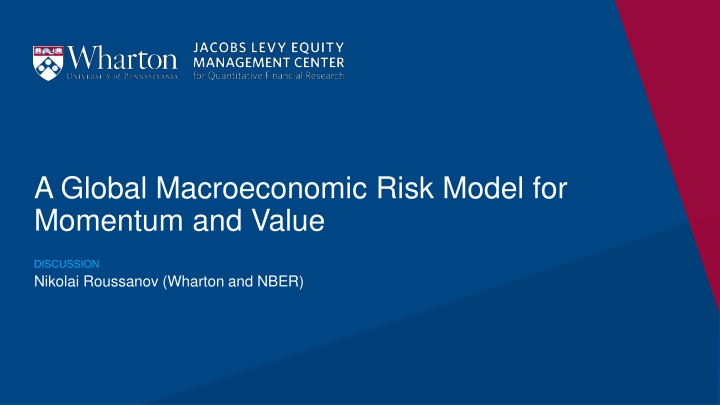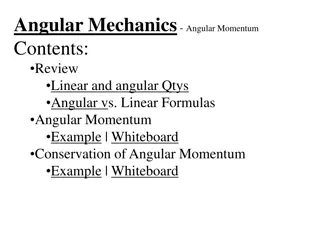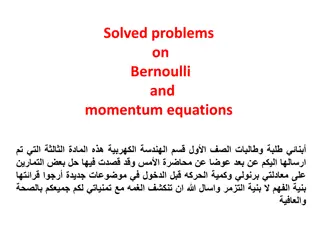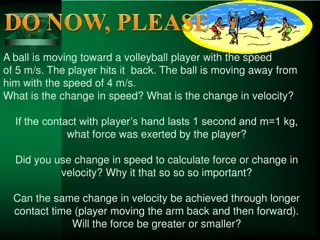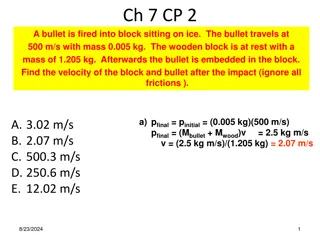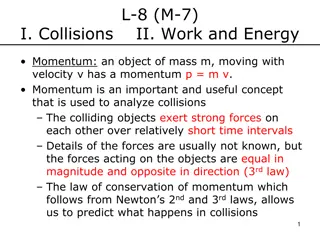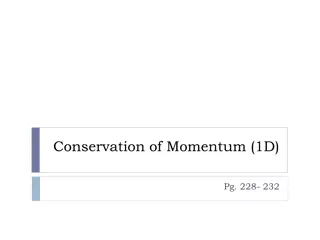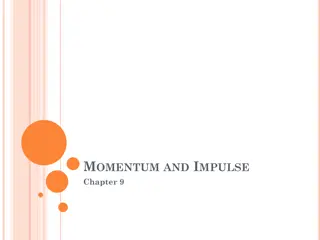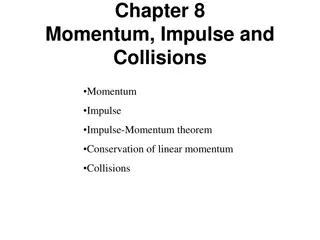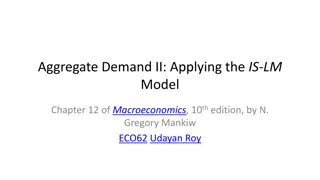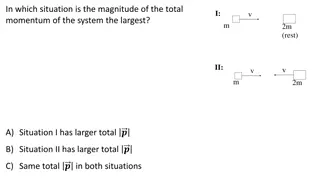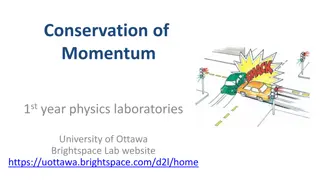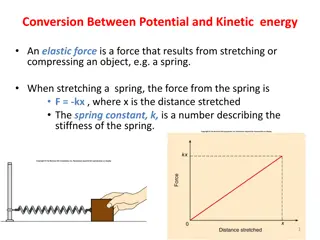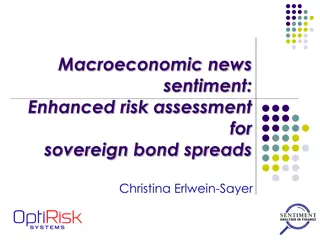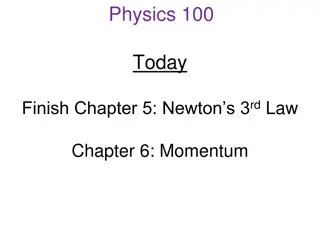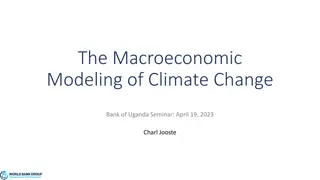Global Macroeconomic Risk Model for Momentum and Value
In this discussion, Nikolai Roussanov presents a research paper exploring the profitability of value and momentum strategies across global equities and asset classes. The study relates expected returns to sources of fundamental macroeconomic risk, shedding light on the interplay between value and momentum in the world of investing. It delves into the origins of factor investing, explaining how systematic sources of risk cannot be diversified away. The paper examines common factors within different asset classes, offering insights into factors like industrial production growth, change in expected inflation, and more. Overall, it provides comprehensive analysis and findings on the topic.
Download Presentation

Please find below an Image/Link to download the presentation.
The content on the website is provided AS IS for your information and personal use only. It may not be sold, licensed, or shared on other websites without obtaining consent from the author.If you encounter any issues during the download, it is possible that the publisher has removed the file from their server.
You are allowed to download the files provided on this website for personal or commercial use, subject to the condition that they are used lawfully. All files are the property of their respective owners.
The content on the website is provided AS IS for your information and personal use only. It may not be sold, licensed, or shared on other websites without obtaining consent from the author.
E N D
Presentation Transcript
A Global Macroeconomic Risk Model for Momentum and Value DISCUSSION Nikolai Roussanov (Wharton and NBER)
Holy Grail of Empirical Asset Pricing Explain profitability of Value and Momentum strategies around the world, across asset classes Relate expected returns to sources of fundamental macroeconomic risk
Combining value and momentum Asness, Moskowitz, and Pedersen (2013) 3
Value and momentum in global equities Asness, Moskowitz, and Pedersen (2013) 4
Value and momentum everywhere Asness, Moskowitz, and Pedersen (2013) 5
This Paper Consider value and momentum across asset classes, globally Relate average returns to macro factors of Chen, Roll, and Ross (1986) Use factor-mimicking portfolios composed using 6 global portfolios formed on value and momentum across assets
Steve Ross and APT: Origins of Factor Investing Systematic sources of risk cannot be diversified away Hence investors need to be compensated for exposures to them Covariances with common factors should explain risk premia
Common Factors Within Asset Classes Bonds Litterman and Scheinkman (1991) Stocks Fama and French (1992), Carhart (1997) FX Lustig, Roussanov, and Verdelhan (2011) Commodities Szymanowska, De Roon, Nijman, and Goorbergh (2014)
Chen, Roll, and Ross: Interpretable Factors Industrial Production Growth (MP) Change in Expected Inflation (DEI) Unexpected Inflation (UI) Default Premium (UPR) Term Premium (UTS)
CRR Factors Work Across Asset Classes! HEADER Text
Success? Models Rm Rm+VAL+MOM (Asness, Moskowitz, and Pedersen) Five global macro factors (this paper) N factors 1 3 5 GRS - stat 4.08 2.84 2.78
Dark Side of APT Common factor structure can be a gift but also a curse (e.g., Lewellen, Nagel, and Shanken (2010))
Do we need all five macro factors? Models Rm Rm+VAL+MOM (AsnessMoskowitzPedersen) Five global macro factors (CooperMitrachePristley) N factors 1 3 5 GRS - stat 4.08 2.84 2.78 Four global macro factors (minus Ind prod) Four global macro factors (minus Unexp Inflation) Four global macro factors (minus Exp Inflation) Four global macro factors (minus Global Term Prem) Four global macro factors (minus US default spread) Three global macro factors (IP, Unexp+Exp inflation) Three global macro factors (IP, Unexp inflation + UTS) 4 4 4 4 4 3 3 3.05 2.84 3.08 4.23 2.82 4.22 2.90
What if we only use base assets as factors? Models Rm Rm+VAL+MOM (Asness, Moskowitz, and Pedersen) Five global macro factors (this paper) N factors 1 3 5 GRS - stat 4.08 2.84 2.78 Four global macro factors (minus Ind prod) Four global macro factors (minus Unexp Inflation) Four global macro factors (minus Exp Inflation) Four global macro factors (minus Global Term Prem) Four global macro factors (minus US default spread) Three global macro factors (IP, Unexp+Exp inflation) Three global macro factors (IP, Unexp inflation + UTS) 4 4 4 4 4 3 3 3.05 2.84 3.08 4.23 2.82 4.22 2.90 High, mid, low, val and mom, global High, low, val and mom, global 6 4 2.71 2.73
Alternative Factors? How About the Following (all growth rates): Assets of commercial banks Civilian labor force Passenger car registrations Loans and leases in bank credit New housing permits
Alternative Factors Models Rm Rm+VAL+MOM (Asness, Moskowitz, and Pedersen) Five global macro factors (this paper) N factors 1 3 5 GRS - stat 4.08 2.84 2.78 Four global macro factors (minus Ind prod) Four global macro factors (minus Unexp Inflation) Four global macro factors (minus Exp Inflation) Four global macro factors (minus Global Term Prem) Four global macro factors (minus US default spread) Three global macro factors (IP, Unexp+Exp inflation) Three global macro factors (IP, Unexp inflation + UTS) 4 4 4 4 4 3 3 3.05 2.84 3.08 4.23 2.82 4.22 2.90 High, mid, low val and mom, global High, low val and mom, global 6 4 2.71 2.73 5 2.72 Alternative US macro factors
Concluding Thoughts Key result: global macro factors related to global value and momentum returns! Too many degrees of freedom? Which factors most important? Why?
